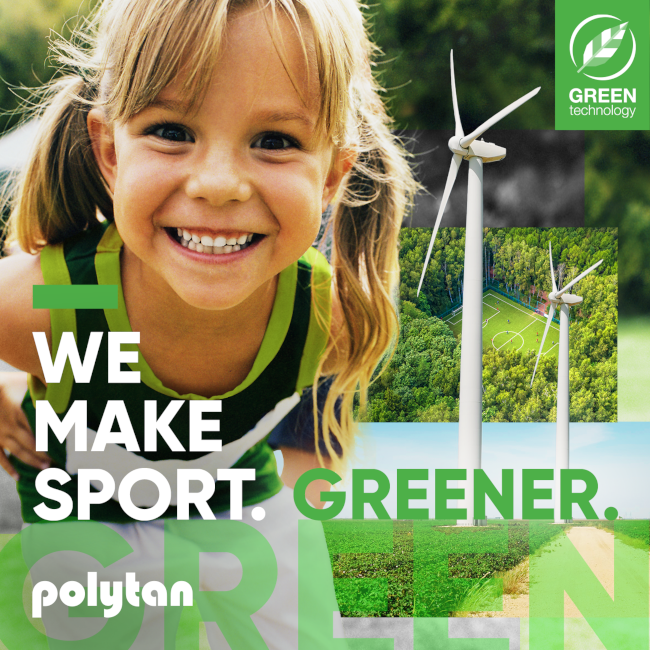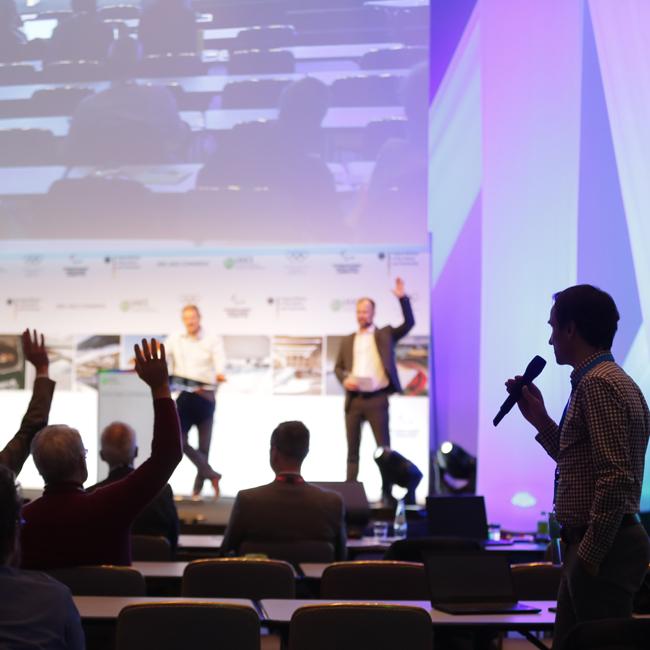Less mineral raw materials, more sustainable ones: this is the future of plastic production. For over 100 years, it was an unwritten law: for the production of plastic, you need oil, which produces CO2. But this is slowly starting to change. At Polytan, one of the world market leaders for sports flooring systems, this process began several years ago. That’s why the company has launched the Green Technology label on the market, which covers all its activities in regard to environmental and climate protection. At FSB, Polytan will continue its drive towards green products and demonstrate, among other things, how sustainable raw materials and recycled materials can be combined.

photo: Polytan GmbH
To this day, plastic is still largely produced from fossil raw materials. But for several years, Polytan has been looking for alternatives and pursuing three separate strategies to reduce CO2 emissions. The first of these is production. To give just one example: the Polytan subsidiary Polytex, which produces artificial turf in Grefrath, North Rhine-Westphalia, uses up to 100 % green electricity.
The second strategy consists of sustainable raw materials and natural in-fill materials. A new addition to the product range is the in-fill material BrockFILL, which is made of up to 100 % American pinewood. Compared with cork, which is also in the Polytan product range, these natural granules are heavier and do not float to the surface as easily in heavy rain, without compromising on their physical, athletic properties. They are also 100 % compostable.
Polytan has taken yet another big technological step by introducing its first CO2-neutral football turf, LigaTurf Cross GT zero. The base material of the turf is a by-product of the sugarcane harvest in Brazil, from which the plastic in the turf is sourced. The sugarcane is used to produce food and fuel in Brazil. The unused by-products are then used in plastic production. This material by Polytan partner Braskem is being used in more and more Polytan turf products, for example in the hockey fields used at the Olympic Games in Tokyo.
It is a myth that rainforest is felled for sugarcane production, as is the common assumption that it consumes increased water. 90 % of the water consumption is covered by rainfall.
CO2 reduction also plays a role in the PolyBase GT elastic layer. As well as recycled rubber, it uses the binding agent cardyon® from German manufacturer Covestro. Our partner uses CO2 that has been extracted from the atmosphere to produce the binding agent.
The third and newest strategy is the use of recycled material. In the past, an artificial turf at the end of its life was consigned to the waste heap. For Polytan, it’s a raw material – and so is other old plastic, as found in household waste, for example. In future, recycled plastic will be just as much a part of Polytan turf as plastic made of renewable materials. The recently founded subsidiary FormaTurf fully recycles old artificial turf, including the filaments, back pitch and in-fill, and makes it into new products. The sand is cleaned, washed and returned to the material cycle.
There is no one way to reduce CO2 emissions. Different solutions are required. That’s why Polytan is pursuing multiple strategies at once and resolutely continuing down the path to carbon-neutrality.





